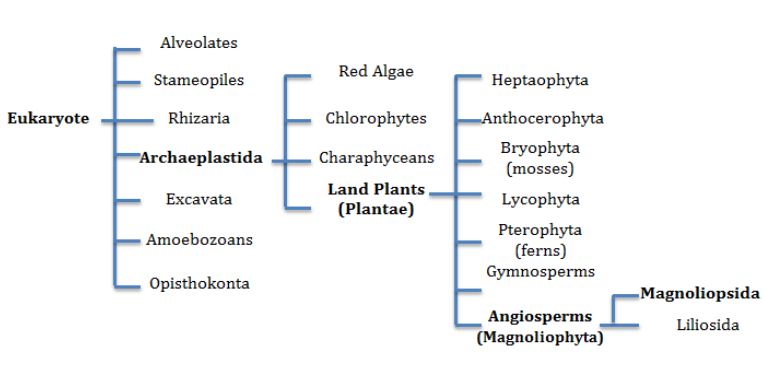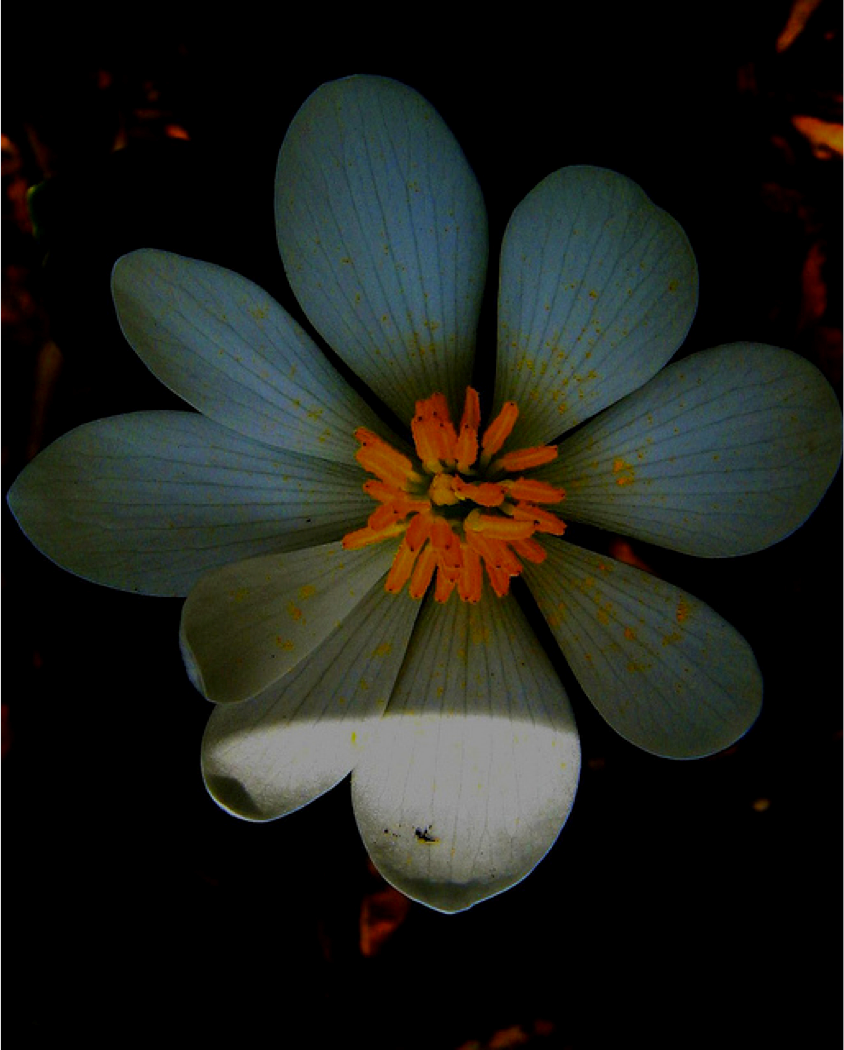
Classification
Scientific name: Sanguinaria canadensis L.Common name: Bloodroot
Sanguinaria canadensis L. is commonly referred to as Bloodroot. It got this name because of the orange-red juice that comes out of the plant; mainly from the rhizome.
Domain: Eukarya
Kingdom: Plantae
Phylum: Magnoliophyta
Class: Magnoliopsida (Flowering plants)
Order: Ranunculales
Family: Papaveraceae (Poppy family)
Genus: Sanquinaria L.
Species: S. canadensis







Domain - Eukarya: Bloodroot is in the domain Eukarya because they have membrane bound organelles, a true nucleus, and linear chromosomes. Mammals, birds, reptiles, amphibians, fish, plants, and protists are all eukaryotes.
Kingdom - Plantae: Plants in kingdom Plantae are multicellular with cell walls made out of cellulose, they photosynthesizes, and are also autotrophic which is why bloodroot is considered part of this kingdom. Bacteria, fungi, algae, liverworts, mosses, ferns, conifers and flowering plants are all in the kingdom Plantae.
Phylum - Magnoliophyta: Bloodroot belongs to this phylum because they form fruit after flowering, which holds the seeds. Also, because they have leaves, stems and roots. This phylum includes all flowering plants.
Class - Magnoliopsida: Bloodroot is considered in this class because they are dicots. This means that seedlings have two seed leaves. Organisms in this class include water lilies, white oak, apple trees, and sugar maple. Some specific examples include the purple coneflower, dandelions, salmonberry, Madagascar periwinkle, and tobacco.
Order - Ranunculales: Members of this group, including bloodroot, exhibit three colpi (openings) in the pollen instead of one. The fig buttercup is also apart of this order.
Family - Papaveraceae: Some characteristics of this family are that they include herbaceous plants, pharmaceutically important plants, and most species are found in the northern hemisphere. Other characteristics of this group are dish-shaped flowers, one pistil and many stamens. The fruit is also usually spherical or a linear capsule. All these characteristics apply to bloodroot. Other organisms in this family include the California poppy, Himalayan poppies, and many species of Papaver. One of these species includes Papaver somniderum which is also known as the Opium Poppy.
Genus - Sanguinaria L.: Bloodroot is placed in this group because it possesses anti-bacterial properties.

This tree is based on morphology. It is the simplest way to separate organisms out into groups so that organisms can be distinguished from others. In this tree, the groups that Sanguinaria canadensis L. belong to are distinguished all the way down to the order. This chart was modified by Ivy Miemietz.

This tree shows some common ancestors of magnoliids, or bloodroot based on morphological differences. Eudicots include elms, maples, and legumes; monocots include grasses, lilies, palms, and orchids; magnolias and laurels are part of magnoliids; Nymphaeales includes water lilies; and other land plants are gymnosperms, bryophytes and ferns. Redrawn from the McGraw-Hill Yearbook of Science & Technology 2008 by Ivy Miemietz.


